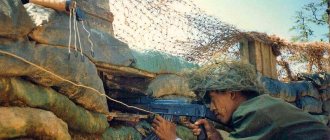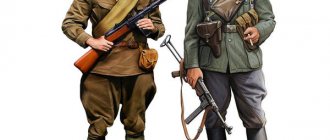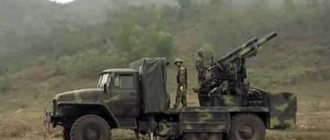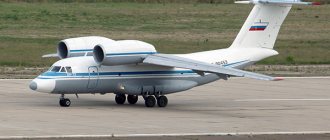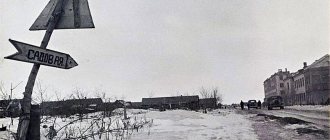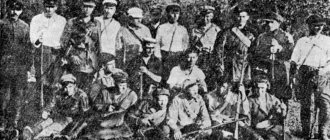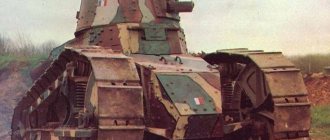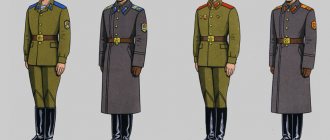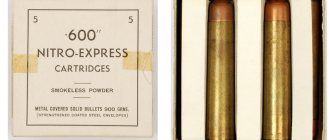The Vietnam War, which lasted nearly 18 years, was fought primarily between North Vietnamese forces and the South Vietnamese army, supported by American forces. In fact, this confrontation was part of the Cold War between the United States on the one hand and the Soviet Union and China, which supported the communist government of North Vietnam, on the other.
After the surrender of Japan, which occupied Vietnam during World War II, the confrontation practically did not stop. Ho Chi Minh, a prominent figure in the Comintern, led the movement for a unified communist Vietnam in 1941, becoming the leader of the military-political organization Viet Minh, which aimed to fight for the country's independence from foreign domination. He was essentially a dictator until the late 1950s, and remained a figurehead until his death in 1969. Ho Chi Minh became a popular "icon" of the new left around the world, despite the totalitarian dictatorship and the extermination of tens of thousands of people.
Prerequisites
During World War II, the Japanese occupied Vietnam, which was part of a French colony called Indochina. After the defeat of Japan, a certain power vacuum arose, which the communists took advantage of to declare the independence of Vietnam in 1945. Not a single nation recognized the new regime, and France soon sent troops into the country, which caused the outbreak of war.
Beginning in 1952, US President Truman actively promoted the domino theory, which argued that communism was ideologically inevitable towards world domination, so a communist regime would cause a chain reaction in neighboring states, ultimately threatening the United States. The metaphor of falling dominoes linked complex processes in remote regions to US national security. All five American governments that participated in the Vietnam War, despite some nuances, followed the domino theory and a policy of containment.
Truman declared Indochina a key region. If the region falls under communist control, then all of Southeast Asia and the Middle East will follow. This will jeopardize the security of the interests of Western Europe and the United States in the Far East. Therefore, a Viet Minh victory in Indochina must be prevented in any case. The prospects for success and subsequent costs of participating in the US were not in doubt.
The United States supported the French and by 1953, 80% of the material resources used by the pro-French puppet regime to conduct military operations were supplied by the Americans. However, from the beginning of the 50s, the northerners also began to receive help from the PRC.
Despite their technical superiority, the French were defeated at the Battle of Dien Bien Phu in the spring of 1954, which marked the final stage of the confrontation. According to rough estimates, about half a million Vietnamese died during this conflict, called the Indochina War of 1946-1954.
The result of peace negotiations in Geneva in the summer of that year was the creation of four independent countries on the territory of the former French colony - Cambodia, Laos, North Vietnam and South Vietnam. Ho Chi Minh and the Communist Party ruled North Vietnam, while South Vietnam was ruled by a pro-Western government led by Emperor Bao Dai. Neither side recognized the legitimacy of the other - the division was regarded as temporary.
In 1955, Ngo Dinh Diem, supported by the Americans, became the leader of South Vietnam. Based on the results of the referendum, it was announced that the inhabitants of the country abandoned the monarchy in favor of a republic. Emperor Bao Dai was deposed and Ngo Dinh Diem became President of the Republic of Vietnam.
Ngo Dinh Diem became the first leader of Vietnam
British diplomacy proposed a North-South plebiscite to determine the future of a united Vietnam. However, South Vietnam opposed such a proposal, arguing that free elections were impossible in the communist North.
There is an opinion that the United States was allegedly ready to accept free elections and a reunified Vietnam, even under communist rule, as long as its foreign policy was hostile to China.
Results of the Vietnam War
The results of the Vietnam War are best described in numbers:
- US Army combat losses - 47,378 soldiers and officers;
- non-combat losses - 10,799;
- 153,303 American military personnel were injured;
- missing persons - 2300;
- US Air Force planes shot down - about 5 thousand;
- losses of the South Vietnamese army - 254 thousand people;
- losses of the People's Army of North Vietnam and partisans - more than 1.1 million people;
- civilian casualties - more than three million people.
In addition, other figures deserve attention. More than 14 million tons of explosives were detonated throughout the country. To understand this figure, imagine that this is more than for World Wars 1 and 2. Napalm and white phosphorus burned millions of hectares of forest. Half a ton of dioxin, one of the most toxic poisons, was sprayed in Vietnam. Cluster bombs destroyed the population and razed entire villages to the ground. The war cost the US economy $350 billion. If we estimate it in modern terms, it will be more than a trillion. Surely, there are other secrets of the Vietnam War that are still unknown. By the way, soon after the end of this military conflict the Sino-Vietnamese War broke out.
What can I say? A senseless massacre in the framework of the confrontation between two ideologies, in which businessmen without conscience and honor warmed their hands. For America, this war became a disgrace and brought tens of thousands of dead to its people. This is another shameful episode in US history, along with the atomic bombing of Japanese cities and the genocide of Indians. Have they learned the lessons of the Vietnam War? Looks like no.
For Vietnam, this war became a huge tragedy and a brilliant feat of the people of this country in the fight against foreign intervention. For the residents, the losses in the Vietnam War were colossal, but they defended their sovereignty and the right to live at home according to their own rules. For them, the lessons of the Vietnam War will remain in their memory for a long time. We hope that the article was useful to you. If yes, then repost on social networks! Vote in the poll below and rate the material! Leave your additions or corrections to the article in the comments!
Terror in North and South Vietnam
In 1953, the North Vietnamese communists embarked on a ruthless land reform, during which landowners, dissidents and French collaborators were massacred. Information about those killed as a result of the repressions varies significantly - from 50 thousand to 100 thousand people, some sources put the figure at 200 thousand, arguing that the real numbers are even higher, since family members of victims of terror died of hunger in the policy of isolation. As a result of the reform, landowners were eliminated as a class, and their lands were distributed among the peasants.
By the end of the 50s, it became clear that peaceful attempts to unite the North and South had reached a dead end. The Northern government supported the uprising that broke out in 1959, organized by South Vietnamese communists. However, some American sources claim that in fact the organizers of the rebellion were deported northerners who entered South Vietnam along the Ho Chi Minh Trail, and not the local population.
By 1960, disparate groups fighting against the regime of Ngo Dinh Diem united into a single organization, which in the West received the name Viet Cong (short for “Vietnamese communist”).
The main direction of the new organization was terror against officials and civilians who expressed open support for the pro-American regime. The South Vietnamese partisans, who received full support from the northern communists, acted more and more confidently and successfully every day. In response to this, in 1961, the United States introduced its first regular military units into South Vietnam. In addition, American military advisers and instructors provided assistance to Zien's army, helping in planning combat operations and training personnel.
First clashes
In August 1964, America's war with Vietnam became an order of magnitude closer after the battle in the Gulf of Tonkin, in which the American reconnaissance destroyer Maddox and torpedo boats of the NLF collided. In response to this event, the US Congress authorized President Lyndon Johnson to launch a full-scale operation in Southeast Asia.
The head of state followed a peaceful course for some time. He did this on the eve of the 1964 elections. Johnson won that campaign thanks to his peace-loving rhetoric, the opposite of the ideas of the hawk Barry Goldwater. Arriving at the White House, the politician changed his mind and began preparing the operation.
The Viet Cong, meanwhile, captured more and more rural areas. They even began attacking American targets in the southern part of the country. The number of US military personnel on the eve of the full-scale deployment of troops was about 23 thousand people. Johnson finally decided to invade Vietnam after the Viet Cong attacked the American base at Pleiku.
Escalation of the conflict
The Kennedy administration in November 1963 decided to overthrow by a coalition of generals the weak South Vietnamese leader Ngo Dinh Diem, who was not popular among the people and failed to organize a proper rebuff to the communists. President Nixon later described the decision as a catastrophic betrayal of an ally that contributed to the eventual collapse of South Vietnam.
There was no proper consensus among the group of generals that came to power, which led to a series of coups in the following months. The country was in a fever of political instability, which the Viet Cong immediately took advantage of, gradually expanding their control over new areas of South Vietnam. For several years, Northern Vietnam transferred military units to American-controlled territories, and by the beginning of open confrontation with the United States in 1964, the number of North Vietnamese troops in the South was about 24 thousand people. The number of American soldiers by that time was just over 23 thousand people.
In August 1964, a collision occurred off the coast of North Vietnam between the American destroyer Maddox and border torpedo boats. A couple of days later there was another clash. The Tonkin incidents (named after the gulf where the conflict took place) became the reason for the United States to launch a military campaign against North Vietnam. The American Congress adopted a resolution authorizing President Johnson, who replaced John F. Kennedy, who was shot several months ago, in this post, to use force.
Bombardment
The National Security Council recommended a three-phase escalating bombing campaign against North Vietnam. The bombings lasted a total of three years and were intended to force the North to stop supporting the Viet Cong, threatening to destroy the country's air defenses and infrastructure, and also provide moral support to South Vietnam.
However, the Americans did not limit themselves to bombing North Vietnam. To destroy the Ho Chi Minh Trail, which passed through the territory of Laos and Cambodia, through which military aid for the Viet Cong was supplied to South Vietnam, bombing of these states was organized.
Despite the fact that during the entire period of air strikes more than 1 million tons of bombs were dropped on the territory of North Vietnam, and more than 2 million tons on Laos, the Americans failed to achieve their goals. On the contrary, such US tactics helped to unite the inhabitants of the North, who, over many years of bombing, had to switch to an almost underground way of life.
Chemical attacks
Since the 1950s, US military laboratories have experimented with herbicides that were developed as chemical weapons during World War II and then used to test their effects on nature for military purposes. Since 1959, these products have been tested in South Vietnam. The tests were successful, and US President Kennedy made the substances a central component of an innovative counterinsurgency strategy in 1961, personally ordering their use in Vietnam. At the same time, the US government took advantage of a flaw in the Geneva Convention of 1925, which prohibited the use of chemicals against people, but not against plants.
In July 1961, the first shipments of chemicals arrived under code names in South Vietnam. In January 1962, Operation Farm Lady began: the US Air Force systematically sprayed herbicides in Vietnam and the border areas of Laos and Cambodia. In this way they cultivated the jungle and destroyed crops in order to deprive the enemy of protection, ambush, food and population support. Under Johnson, the campaign became the largest chemical warfare program in history. Before 1971, the US sprayed about 20 million gallons (80 million liters) of herbicides contaminated with dioxins.
Ground War
Since the bombing did not bring the expected effect, a decision was made to deploy ground combat operations. The US generals chose the tactic of wear and tear - the physical destruction of as many enemy troops as possible with the least possible losses. It was assumed that the Americans should protect their own military bases, control border areas, catching and destroying enemy soldiers.
The goal of the regular American units was not to conquer territory, but to inflict maximum damage on the enemy to prevent possible attacks. In practice, it looked like this: a small airmobile group was sent to the area of operation by helicopter. After detecting the enemy, this kind of “bait” immediately recorded its location and called for air support, which carried out a dense bombardment of the specified area.
These tactics led to numerous deaths of civilians in the cleared areas and a mass exodus of survivors, greatly complicating subsequent “pacification.”
It was not possible to objectively assess the effectiveness of the chosen strategy, since the Vietnamese, whenever possible, took the bodies of their dead, and the Americans were very reluctant to go into the jungle to count enemy corpses. Killing civilians to increase reporting data has become common practice among American soldiers.
The main difference between the Vietnam War can be considered the small number of large-scale battles. Having suffered several major defeats from technically better-equipped opponents, the Viet Cong chose guerrilla warfare tactics, moving at night or during the rainy season, when US aircraft could not inflict serious damage on them. Using the vast network of tunnels as weapons depots and escape routes, engaging only in close combat, the Vietnamese guerrillas forced the Americans to increasingly spread out their forces in an attempt to control the situation. By 1968, the number of American soldiers in Vietnam exceeded 500 thousand people.
US soldiers, unfamiliar with the country's language and culture, could hardly distinguish peasants from partisans. By destroying both for reinsurance, they created a negative image of the aggressor among the civilian population, thereby playing into the hands of the partisans. Although the US Army and South Vietnamese government forces had a 5-fold numerical advantage, their opponents were able to maintain a constant flow of weapons and well-trained fighters who were also much more motivated.
Government forces were rarely able to maintain long-term control over cleared areas, while the Americans were forced to use large numbers of their troops to guard their own military bases and weapons stored there, as they were constantly under attack. In essence, the partisans managed to impose their tactics on the enemy: they were the ones who decided where and when the battle would take place, and how long it would last.
Deployment of troops
The date when America's war with Vietnam began is March 2, 1965. On this day, the US Air Force began Operation Rolling Thunder, a regular bombing campaign against North Vietnam. A few days later, American Marines landed in the southern part of the country. Its appearance was caused by the need to protect the strategically important Danang airfield.
Now it was not just the Vietnamese Civil War, but the US-Vietnam War. The campaign years (1965-1973) are considered the period of greatest tension in the region. Just 8 months after the start of the invasion, there were more than 180 thousand American troops in Vietnam. At the peak of the confrontation, this figure increased threefold.
In August 1965, the first major battle between the Viet Cong and US ground forces took place. This was Operation Starlight. The conflict flared up. A similar trend continued that same fall, when news of the battle in the Ia Drang Valley spread throughout the world.
Tet Offensive
The massive Viet Cong offensive on January 30, 1968 came as a surprise to the Americans and government forces. This date coincided with the celebration of the traditional Vietnamese New Year, during which both sides had previously declared an unspoken truce.
The attack was carried out in hundreds of places simultaneously, and more than 80 thousand Viet Cong took part in the operation. Thanks to the effect of surprise, the attackers managed to capture some objects, but the Americans and their allies quickly recovered from the shock and pushed the North Vietnamese troops back.
During this offensive, the Viet Cong suffered huge losses (according to some sources, up to half of their personnel), from which they could not recover for several years. However, from a propaganda and political point of view, success was on the side of the attackers. The widely publicized operation showed that, despite the presence of hundreds of thousands of American soldiers, the strength and morale of the Viet Cong had not diminished at all over the long period of hostilities, contrary to the claims of the US Army leadership. The public response to this operation sharply strengthened the position of anti-war forces in the United States itself.
In April 1968, the North Vietnamese leadership decided to begin negotiations with the United States. However, Ho Chi Minh demanded the continuation of the war until final victory. He died in September 1969, and Vice President Ton Duc Thang became head of state.
"De-Americanization"
The US General Staff wanted to use the defeat of the Viet Cong to expand and consolidate the success. The generals demanded a new call for reservists and intensified bombing of the Ho Chi Minh Trail in order to further weaken the bloodless enemy. At the same time, the staff officers, taught by bitter experience, refused to outline a time frame and give any guarantees of success.
As a result, Congress demanded a re-evaluation of all US military actions in Vietnam. The Tet Offensive destroyed the hope of the citizens of the United States for a speedy end to the war and undermined the authority of President Johnson. Added to this was the enormous burden on the US state budget and economy caused by the war - for the period 1953-1975. $168 billion was spent on the Vietnam campaign.
Due to the combination of all factors, Nixon, who became US President in 1968, was forced to announce a course towards the “de-Americanization” of Vietnam. Since June 1969, a gradual withdrawal of American troops from South Vietnam began - approximately 50 thousand people every six months. By the beginning of 1973, their number was less than 30 thousand people.
